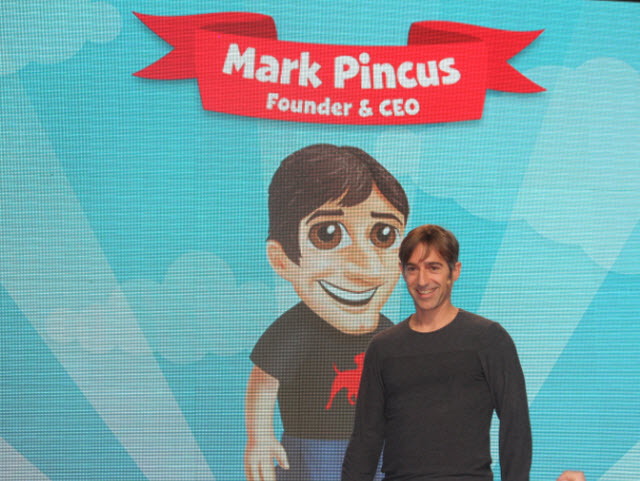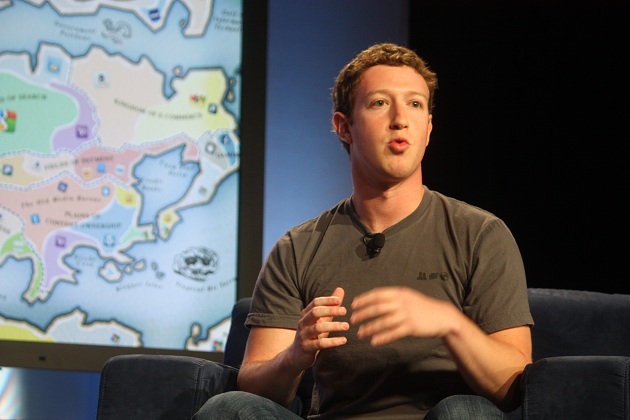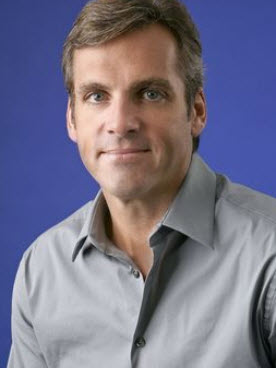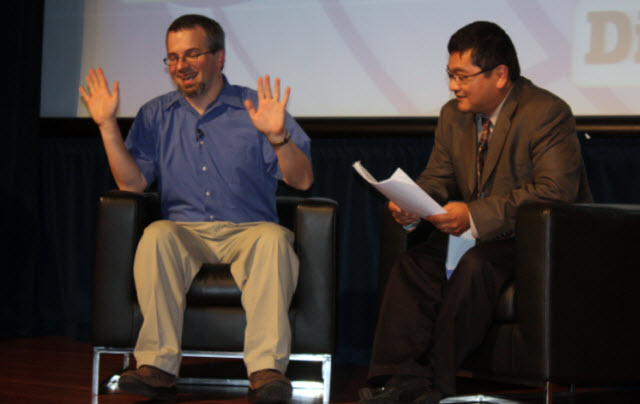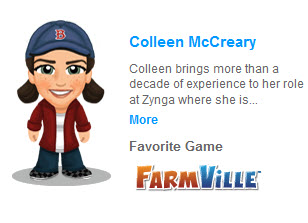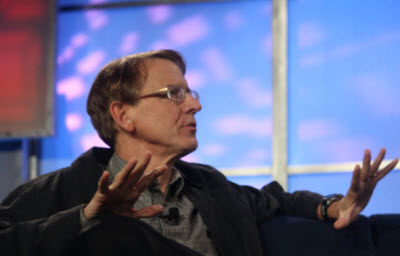Cutting the Facebook Credits deal
Owen Van Natta started showing up at meetings at Zynga during this time. He was the former chief executive of MySpace and the former chief operating officer at Facebook, where he served from September 2005 to February 2008. Van Natta knew Zuckerberg and other Facebook employees well. He was just the kind of advisor that Mark Pincus needed to deal with the Facebook Credits negotiations.
Zynga announced in February, 2010 that it had brought Van Natta on board as an executive, though he had been going to meetings a lot earlier than that.
In talks with Zynga, Facebook revealed that 50 percent of all application programming interface (API) calls were from Zynga games. That meant that half of Facebook’s activity was based on a single partner. Zynga, meanwhile, noted that it was spending an enormous sum of money on ads to try to recruit Facebook users to play Zynga games. Did Facebook really want to squeeze out its No. 1 partner? Why shouldn’t the amount that Facebook collected from Facebook Credits be more like 3 percent to 4 percent, which was what other virtual goods transaction vendors charged?
Facebook was doing its own soul-searching. But Mark Zuckerberg figured out one thing. Facebook itself wasn’t going to be like Tencent, a giant Chinese social network and game company which owned more and more of its own partnership entities over time. Tencent was grabbing more and more of the stack in its ecosystem. Facebook, on the other hand, was the social pipe. Zuckerberg concluded that Facebook wasn’t going to make its own games. It didn’t have the wherewithal to do that. That was Zynga’s core competency. It had to rely on Zynga to provide the most popular applications, so it couldn’t put Zynga out of business.
On May 18, Facebook and Zynga stepped back from their tense nuclear standoff over Facebook Credits. They announced that they had entered into a five-year strategic relationship that ensured mutual support for each other on the social network. Under the deal, Zynga agreed to expand its use of Facebook Credits and eventually use only that currency for virtual goods transactions on Facebook. Zynga agreed to pay Facebook a full 30 percent transaction fee on every virtual goods purchase.
Facebook and Zynga said the deal would be good for both companies, and Zynga appeared to stand down from its threat to pull its games off the social network and invest heavily in other game networks. The companies said the agreement focused on the topic of Facebook Credits and that there was no special deal that Facebook cut for Zynga in that agreement. That part was true.
But there was another agreement the companies didn’t talk about. In that deal, Facebook promised to market its platform and grow its user base so that Zynga would always have fresh users for its games. For its part, Zynga agreed to make its games exclusive to Facebook as long as Facebook delivered certain user numbers to Zynga. No other companies were able to strike a similar deal.
By July 2011, almost all Facebook app developers would be required to switch over to Facebook Credits. Zynga, CrowdStar and other developers paved the way by using Facebook Credits early, thereby willingly paying 30 percent of their transaction revenues to Facebook earlier than they had to do so. The contractual matter solved some of the problems. Zynga also brought Facebook to the negotiating table because it exploited its other options for reducing its dependence on Facebook. But after a while the companies figured out how to align their own self-interests.
After it was over, Mike Arrington of TechCrunch said that the dispute over Facebook Credits was like the Cuban Missile Crisis of tech. Gordon agreed. In an interview in the fall of 2010 with VentureBeat, Gordon said, “In all the years of the video game business, there has been natural friction between content publisher and a platform company. We saw in the video game business that, over time the friction got smoothed out. The easiest way to build stable relationships is to have people on both sides that persist for a while. The No. 1 trick of the publisher and the platform company is to survive together for a while.”
When details of the Facebook Credits deal between Zynga and Facebook became public more than a year later, other game developers were steamed. They had been told that nobody got a sweetheart deal on Facebook Credits, not even Zynga. But Zynga extracted some concessions out of Facebook that made its acceptance of Facebook Credits and the 30 percent fee more palatable to Zynga. Still, Zynga was in no hurry: It would be April 2011 before Zynga completed its transition to Facebook Credits. And Zynga kept making exclusive games for Facebook.
FrontierVille changes Zynga
As chief game designer, some of Brian Reynolds’ ideas at Zynga weren’t going so great. His team in Baltimore was working on a variety of ideas. One game called Fashion Wars didn’t work out. Nor did Civ Wars. Even with seasoned game veterans, it took time to get social games right.
Zynga launched Reynolds’ first successful game, FrontierVille, on June 9, 2010, about a year after he joined. His team at Zynga East had 16 employees, so the title took a lot more time and investment than many of Zynga’s previous games. Even so, that team still far smaller than what other companies needed to create console games, which typically had more than 100 developers working on them.
The game was critical in one respect. Facebook’s move to curtail game spam earlier that year meant that Zynga was losing players by the tens of millions. On April 20, 2010, Zynga had 252 million monthly active users. But by the time that FrontierVille launched, Zynga’s numbers had fallen to 216 million monthly active users. It needed something to reverse the slide.
In FrontierVille, Zynga had produced what nobody could criticize. It was an original game, unlike most other games Zynga had created. That was a major milestone at the time. It had a frontier theme where players created a homestead in the wilderness and had to grow it into a bustling frontier town. It was a family game, more about tending crops and livestock than it was about shooting guns off and scalping your neighbors.
Reynolds was as hardcore as they came. He used to delight in setting off nuclear bombs in his game demos while working for designer Sid Meier. But now he had become a casual game maven, essential to Zynga’s mission in raising the bar and attracting new audiences.
The depth of FrontierVille was in its social game play. In FarmVille, your friends could help you tend your crops and you might never pay them much attention. But helping others was key to the game play of FrontierVille. You could help your friend tend crops, feed animals, chop trees and revive withered crops. You could raise your family, tend crops, chase varmints off your land, add neighbors and raise your reputation by helping others.
“In this game, you can see who is helping you more easily,” Reynolds said in an interview with VentureBeat. “What I was taught was to take a lot of simple pieces and have them interact in deep ways. The goal is to improve the quality of the social experience. “
Reynolds described the game as “Oregon Trail meets Little House on the Prairie meets FarmVille.” Being original was part of Reynolds’ charter.
When FrontierVille launched, it saw a lot of user traction right away, but then usage flattened out. The problem was that the team didn’t have an analyst focused on looking at user data, so there were basically a bunch of designers flying blind. Then, when Zynga finally put a full-time analyst on FrontierVille, usage started taking off again. Then it soared past 30 million users, making it one of the company’s biggest games.
Creating Zynga’s new culture
The success of FrontierVille and Reynolds’ team of game developers helped Zynga figure out its identity. As the company grew its revenues, it was able to pick up lots of new developers. Rivals such as Playdom had raised money as well and they were able to start acquiring game studios — already battered by the recession — relatively cheaply. So Zynga decided it needed to do the same thing.
There were plenty of distressed game studios. Zynga looked at hundreds of them before it acquired one. Eventually, it ramped up to where it was acquiring game studios at a rate of one per month. Zynga added people at a fast rate too. Then, in July 2010, Disney agreed to buy Playdom for $763.2 million. Now not only did Zynga have to compete against EA, it also had to fight against Disney.
Zynga didn’t have any major brands to compete against its rivals. All it had were its people. Colleen McCreary became Zynga’s chief people officer in March 2009. The former human resources executive for Electronic Arts said that it wasn’t easy to create a common corporate culture when the company was moving so fast and acquiring so many new game studios. But she felt like the team had something in common.
“We are a large, motivated group of people who are excited about being on the cutting edge of something new,” McCreary said. “They built their careers elsewhere and see this as the next big thing.”
McCreary’s team pulled together some core principles for creating a better company culture. The only way to get people working as fast as they could was to empower them and make the company live up to its core ideals.
McCreary herself joined after taking a suggestion from Bing Gordon. She talked with Mark Pincus for three hours, and she felt like it was almost like a mutual therapy session. She turned Pincus down to take a job in India for EA. But Pincus stayed in touch, and after four months he tried again. This time, she accepted.
“It said something about his desire that he kept in touch,” she said in an interview in the fall of 2010. “He wanted me to find the best people to come in and build product in a motivated way. He wanted us to create what every CEO in Silicon Valley wants. At a startup, the first 20 people you hire are friends. The next 80 are those you need to get the work done. At some point, we get so big that we have to figure out how we will scale and manage.”
As Zynga was growing, it could pick up workers from places that were laying them off, like EA. Traditional game developers liked Zynga because “it was a chance to connect with a consumer that they never had.” Those developers had small roles on huge teams. But at Zynga, a team of 10 to 25 people could create a big game in three to six months. With Reynolds, McCreary said Zynga took a big risk on him, trusting him to produce something wonderful after a long time of trial and error.
But employees were under stress at Zynga, where the work pace was punishing. People who didn’t meet the standards were under the whip. They had to perform or leave.
Zynga held its employees accountable. John Doerr, the Kleiner Perkins partner, convinced Pincus to adopt O.K.R.s, or “objectives and key results,” a management technique used at Intel and Google. The company as a whole and every group within it has one objective and three measurable key results. Pincus asks his people to write down three priorities for the week and then see how they did on Friday executing them. It keeps people focused and keeps them from burning out, Pincus said. That system helps weed out the poor performers, but it also keeps them from getting distracted with too many things that don’t matter.
Some people viewed Zynga as “Ghetto Google.” That meant it had perks like free food for employees, but the perks weren’t quite as nice as the search giant’s. Still, Zynga picked up the tabs for employees’ laundry or dry cleaning.
“We don’t want a sense of entitlement and we want people to be scrappy,” McCreary said. “And we are not Goo Hoo Soft.”
After a while, employees started asking what a career path was like at Zynga. If a software engineer was going to move up, what was the next step? Within a few months, Zynga prepared its career path, which involved getting people to work 20 percent of their time on future goals and to train their replacements. In the fall of 2010, Mark Pincus was still spending hours with McCreary going over the goals of each individual employee at Zynga. While Pincus was busy and could be tough, he held office hours so that people felt free to drop in on him.When Zynga has unhappy employees, Pincus gets very involved, McCreary said.
For those who felt overworked, especially at launches, Zynga tried to get relief. It could hand off work to its India office and rotate people through shifts. Later on, Zynga would reveal that 64 percent of its employees had been on board for less than a year, and 92 percent for less than two years. Many of them stayed on, though, even though Zynga was a tough company to work for, because they got lots of promotions and quarterly cash bonuses. They also saw a big payday coming in Zynga’s future, as it was getting into a good position for an initial public offering.
